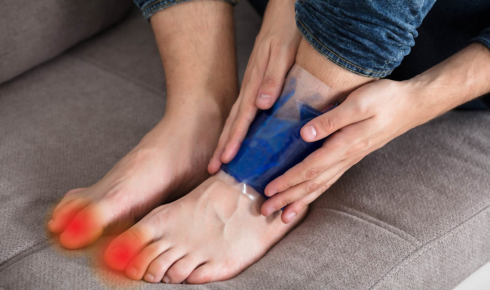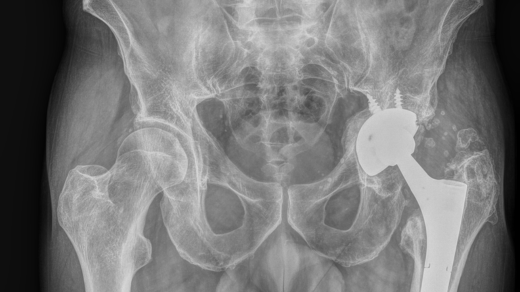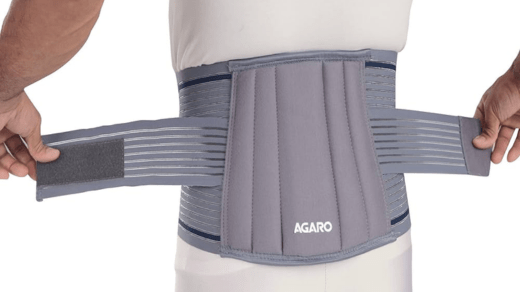Many patients battling gout believe relief is as simple as lowering uric acid levels or taking anti-inflammatory pills. But what if traditional treatments are missing a bigger problem hidden beneath the surface? Without foot regeneration to repair lasting tissue damage, conventional gout therapies often hit a frustrating dead-end.
Overlooked Joint Damage Undermines Traditional Gout Therapies
Joint damage caused by gout attacks isn’t always obvious at first glance. Pain relief medications might temporarily ease discomfort, but they fail to repair hidden joint destruction happening beneath the skin. A gout specialist near me might highlight that, even without immediate pain, the joints may still weaken over time, limiting mobility. Persistent pain returns because the real damage—tiny cracks, worn cartilage, and inflamed joint tissue—remains untreated.
Patients often notice their treatments becoming less effective after several flare-ups. This decline occurs because each gout attack leaves behind structural damage that standard pills can’t fix. Even the best gout doctor near me would explain that without addressing these structural issues through foot regeneration, ongoing treatments merely mask symptoms. Long-term recovery requires therapies that target joint healing rather than just reducing temporary inflammation.
Chronic Inflammation Persists Without Cellular-Level Healing
Inflammation from gout does not magically vanish once the visible swelling goes down. At a cellular level, inflammation continues quietly, disrupting the foot’s normal healing process. Without methods that promote foot regeneration, inflamed tissues remain vulnerable. Over time, persistent inflammation weakens foot structure, increasing susceptibility to future gout attacks and additional complications like arthritis.
Conventional treatments typically overlook cellular repair, focusing instead on managing symptoms. However, true healing requires regeneration at a deeper, cellular level to restore damaged tissue fully. Effective gout care involves specialized therapies to stimulate the body’s natural regenerative capabilities. A skilled gout doctor near me might emphasize treatments like platelet-rich plasma or stem cell therapy, which directly encourage cells to heal damaged tissue, reducing chronic inflammation for lasting relief.
Tissue Degeneration Limits Effectiveness of Standard Medications
Traditional gout medications primarily target pain and inflammation but rarely address the degenerative tissue changes occurring in affected joints. Over time, repeated flare-ups lead to significant tissue degeneration, making medications progressively less effective. Each gout attack leaves weakened tissues that medication alone can’t strengthen or repair, causing frustration and ongoing discomfort for patients.
This tissue breakdown reduces overall foot strength, flexibility, and resilience, leading to constant pain and reduced quality of life. Treatments that include foot regeneration methods actively rebuild weakened tissues, enhancing the foot’s natural ability to withstand future flare-ups. Without these regenerative interventions, standard therapies continue falling short, unable to reverse the ongoing decline of foot structure.
Uric Acid Control Alone Leaves Structural Issues Unresolved
Patients often assume controlling uric acid levels fully resolves gout, but structural damage doesn’t disappear even when levels normalize. Lowering uric acid helps prevent future crystals from forming, yet the previously damaged joints still remain compromised. A gout specialist near me would clarify that without addressing structural repair through regenerative techniques, patients might continue experiencing pain despite normal lab results.
Focusing solely on uric acid reduction ignores existing physical deterioration. The joints, bones, and connective tissues weakened from past gout attacks require active repair for complete recovery. Effective gout treatment should combine uric acid management with regenerative treatments designed to rebuild damaged structures, ensuring complete restoration of the foot’s health and mobility.
Cartilage Erosion Often Missed by Typical Gout Remedies
Cartilage damage from gout frequently escapes notice because it develops silently over months or years. Traditional treatments rarely detect or treat this gradual cartilage erosion, focusing instead on obvious symptoms like pain and swelling. Over time, unnoticed cartilage loss reduces joint function and worsens discomfort, frustrating patients who see limited results despite following prescribed treatments closely.
Cartilage provides essential cushioning to joints. Its loss leads to bone-on-bone friction, intensified pain, and increased disability. Without treatments aimed specifically at cartilage repair—such as regenerative medicine therapies—patients remain trapped in cycles of temporary relief and recurring pain. Incorporating foot regeneration strategies directly targets cartilage rebuilding, delivering meaningful, long-term improvement rather than temporary symptom relief.
Regenerative Techniques Target Root Causes Beyond Symptom Relief
While anti-inflammatory medications manage immediate pain, regenerative techniques offer long-term solutions by addressing root causes of foot deterioration. Treatments like platelet-rich plasma (PRP), amniotic tissue injections, or stem cell therapies specifically target joint tissues, actively promoting repair rather than simply masking discomfort. These advanced treatments stimulate natural cellular responses, rebuilding tissues damaged by gout attacks.
Unlike traditional treatments, regenerative medicine addresses the underlying structural damage, providing sustained relief and preventing future flare-ups. Patients who seek gout regeneration therapies often experience dramatic improvements because these treatments directly restore tissue integrity. Integrating regenerative treatments alongside traditional therapies offers patients a comprehensive approach to gout management, breaking the cycle of recurring pain.
Persistent Foot Damage Requires More Than Anti-Inflammatory Medications
Anti-inflammatory medications provide essential relief during acute gout attacks but do little for lasting foot damage. Chronic structural harm—such as scar tissue formation, weakened tendons, and compromised joints—requires targeted intervention through regenerative treatments. A gout doctor near me would emphasize that while medications control immediate symptoms, regeneration is key to lasting improvement and sustained foot health.
Foot regeneration therapies rebuild structural integrity, restoring strength and function to damaged tissues. Without regeneration, chronic pain and disability often persist, leaving patients dependent on medications indefinitely. Embracing a regenerative approach alongside conventional treatments gives patients the best chance at true recovery, improving their quality of life far beyond temporary relief.





